Burma – Colonial Yangon
Yangon has a rich architectural colonial legacy, mostly neglected. It remains to be seen what can be preserved…
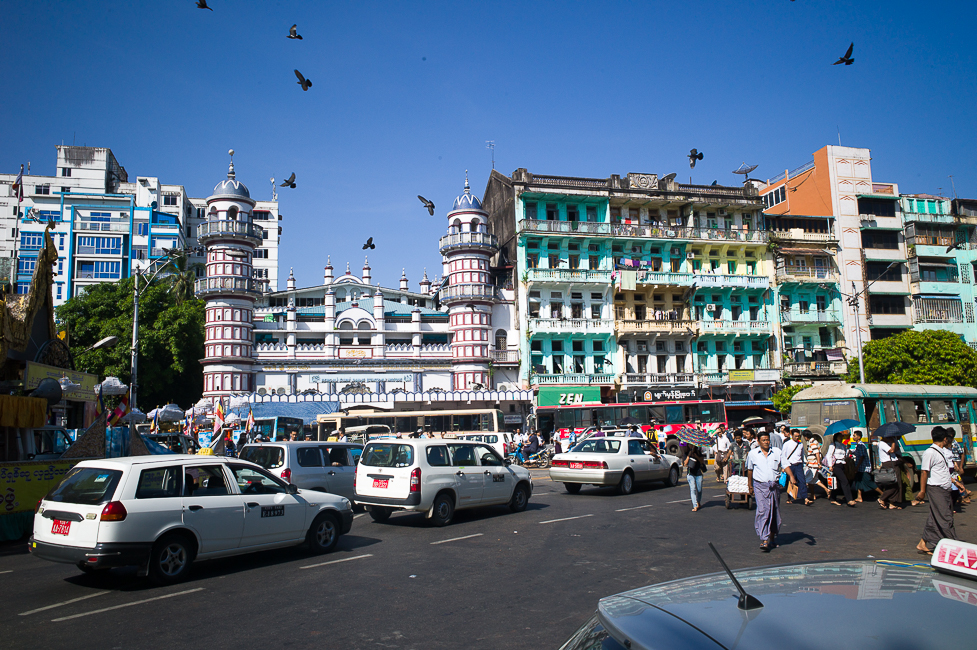

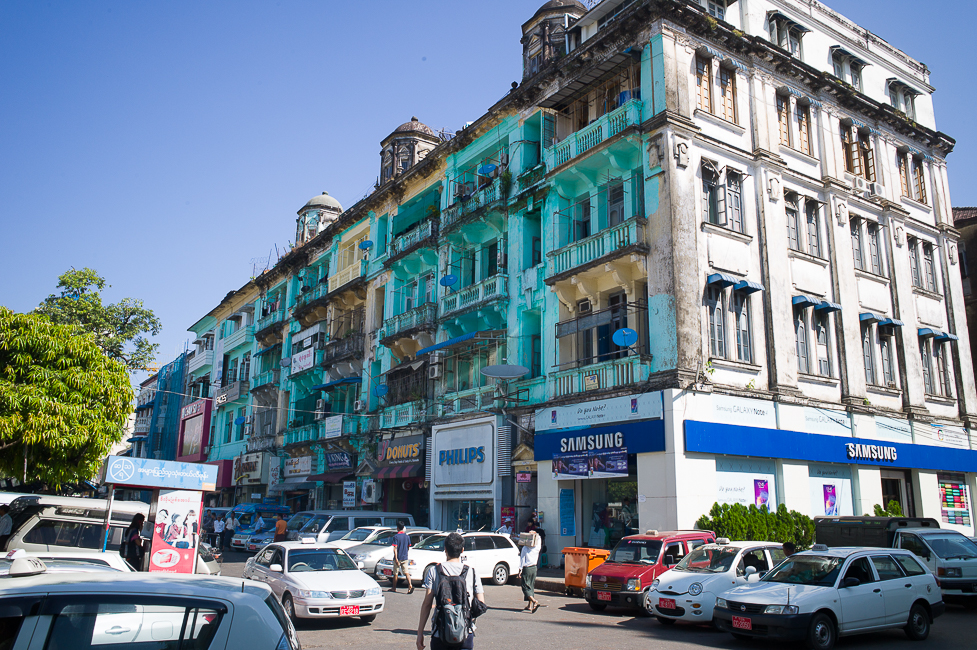
Downtown Yangon was designed by a grid of streets with mayor roads from the east to the west and numbered smaller streets stretching north-south. “Downtown” central Yangon could be located between 17th and 44th street, with the Sule Pagoda and City Hall in the middle. 
I followed the City Walk suggested by the Lonely Planet Guide to cover most of the colonial landmarks, even though the first three pictures show that there are whole street sections with colonial buildings, most of them neglected and in rather bad shape. But let´s start with the tour.
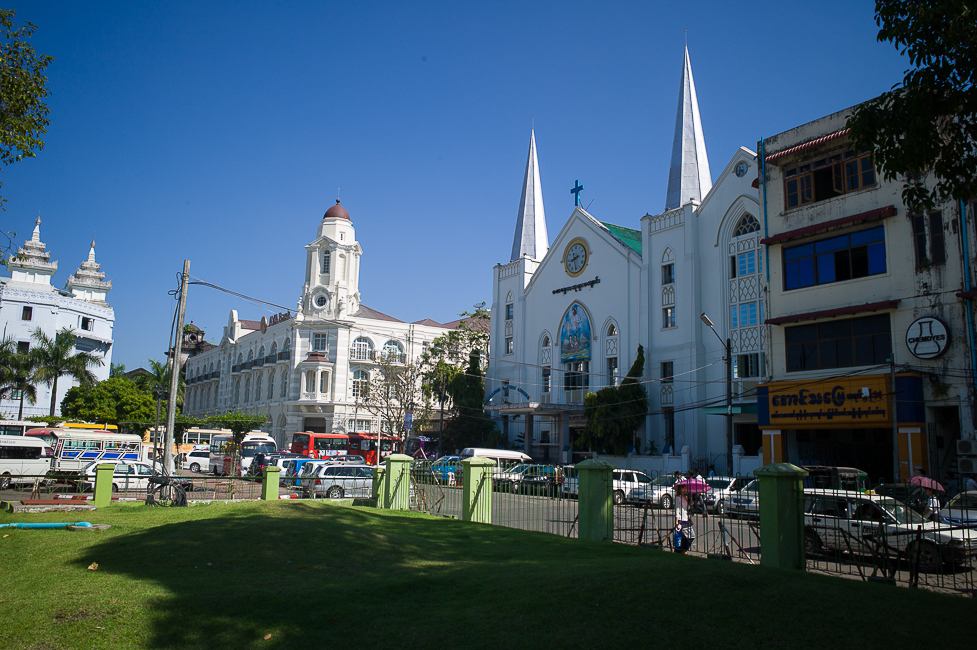
Next to City Hall is the Former Immigration Department on the corner, which was once the Rowe&Co department store (“The Harrods of the East”). Today it is a bank, thus recently renovated.
Across the street is the Immanuel Baptist Church, constructed in 1830.

Further south the former High Court with it´s bell tower.A picture taken further away shows the dimension of the park around the Independence Monument, a rather uninspiring column.
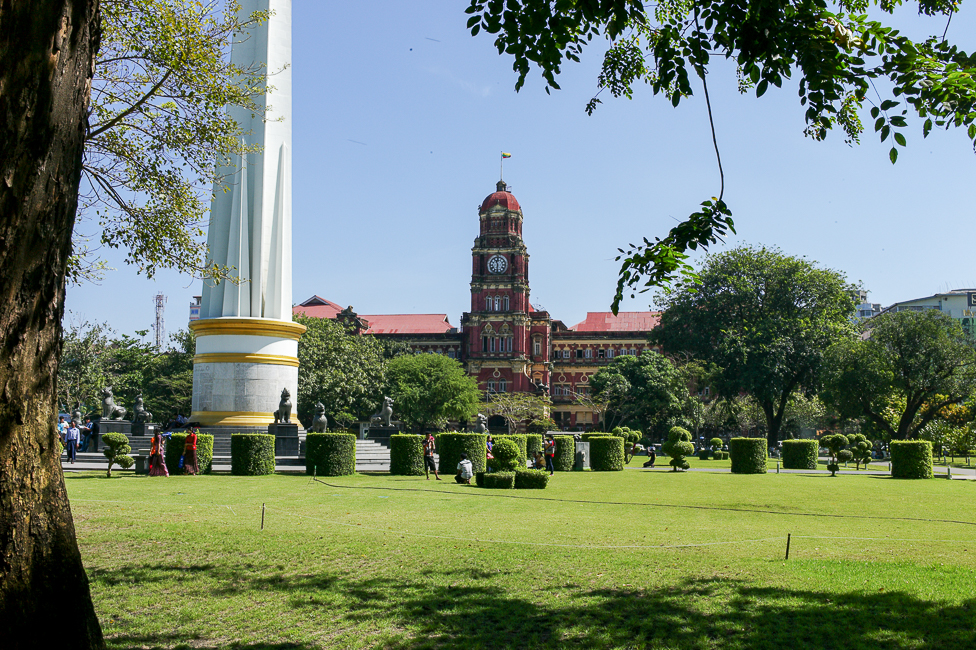
Heading south one reaches Strand Road, next to the Yangon River. Several colonial buildings are lined up on that road. On the corner Customs House, built in 1915 and still functioning in its original purpose. 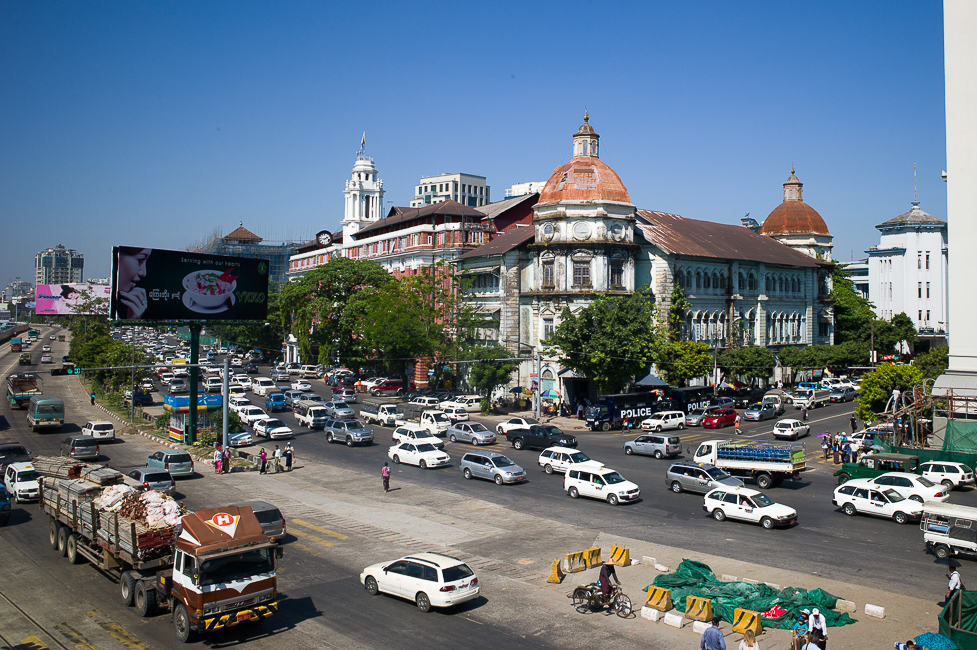
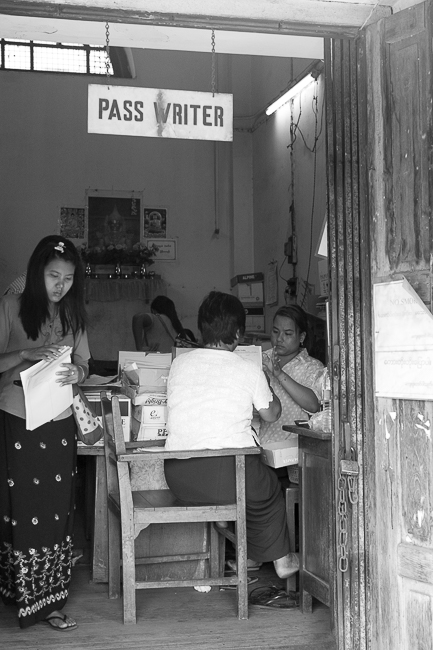
One ist tempted to compare Strand Road to the Bund in Shanghai, but there is actually no direct waterfront and sidewalk next to the river, just shacks, walls etc.
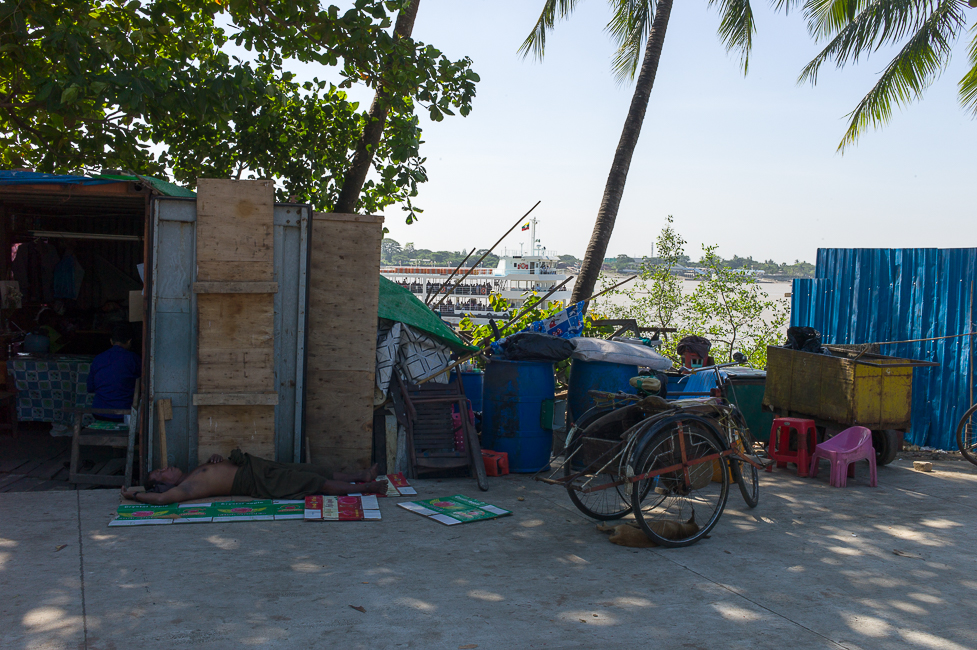
Across the street form the Customs House is the Port Authority with the newly renovated Strand Hotel next to it.
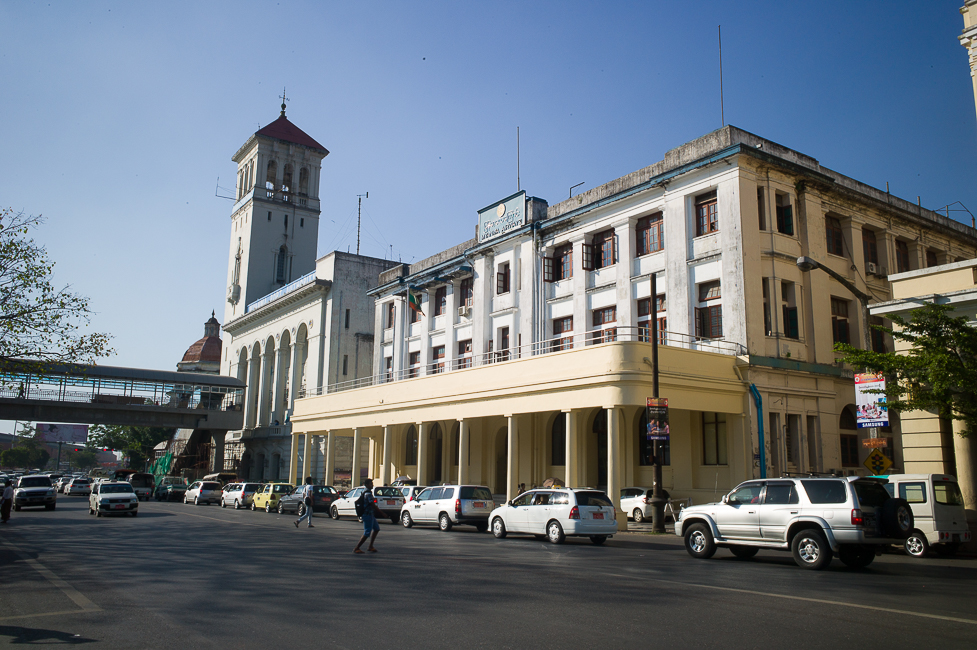
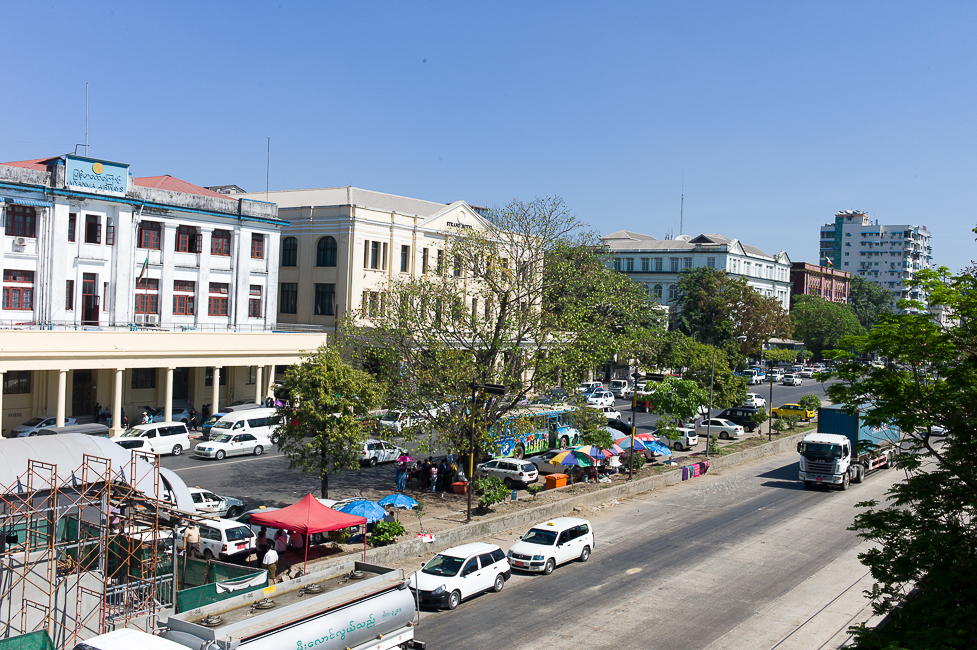
The Central Post Office from 1908 is also still in service. It has lovely beaux-arts ceilings inside.
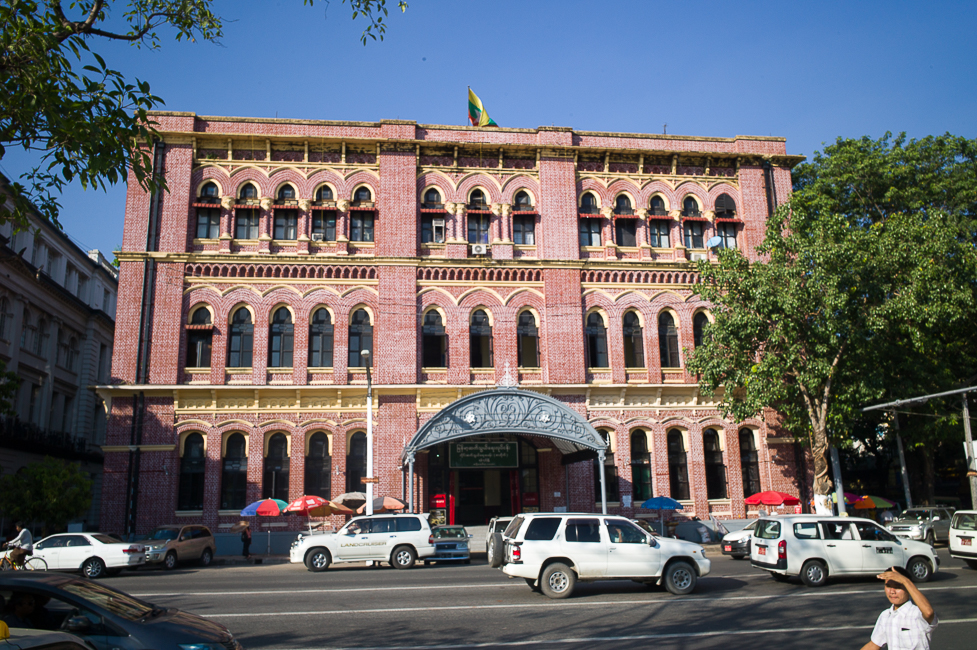


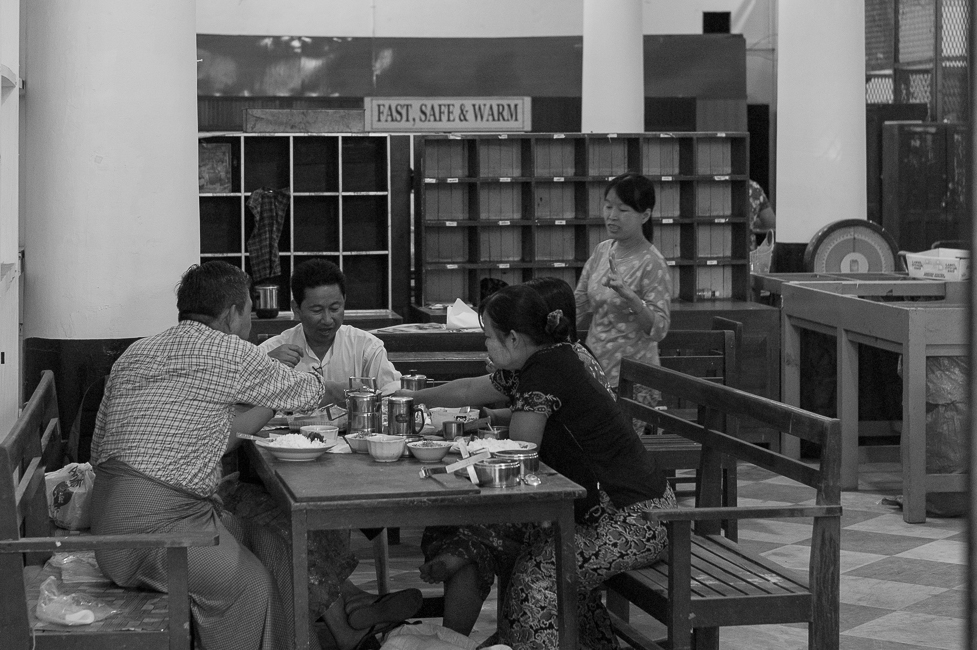
It was time for lunch break and people had there meal within in the Post Office. I wondered what the phrase “Fast,Safe, Warm” meant in the context of parcel deliveries….
Next to the Post Office the British Embassy is located, which is a rather unusual as most of the embassies are not located downtown.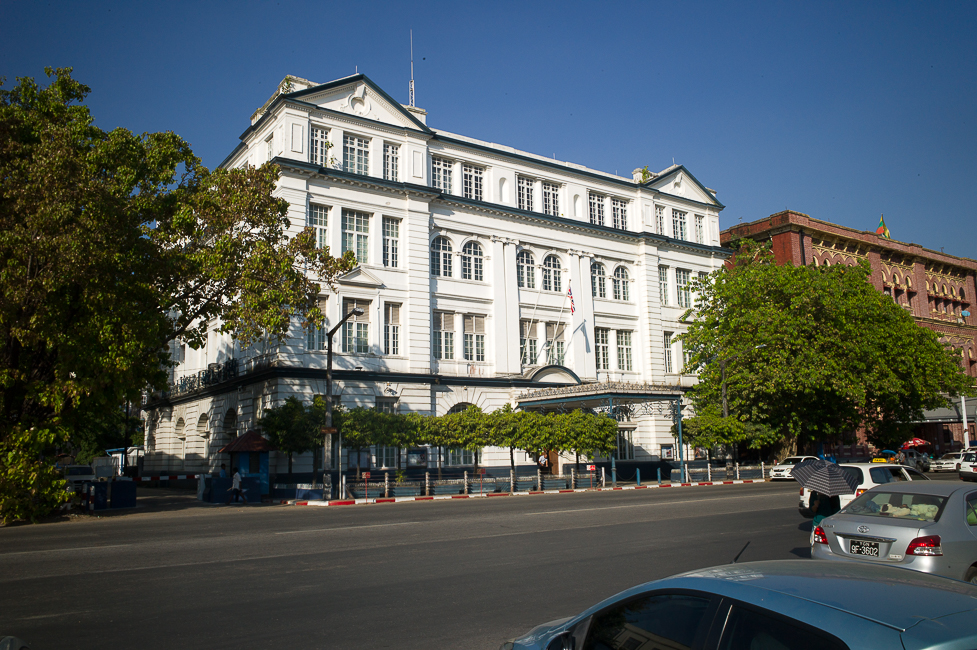
Turning back north you pass several colonial buildings in different stages of decay. Some have found commercial investors like the Myanmar Economic Bank in the blue building and the Agra Development Bank in the green one. 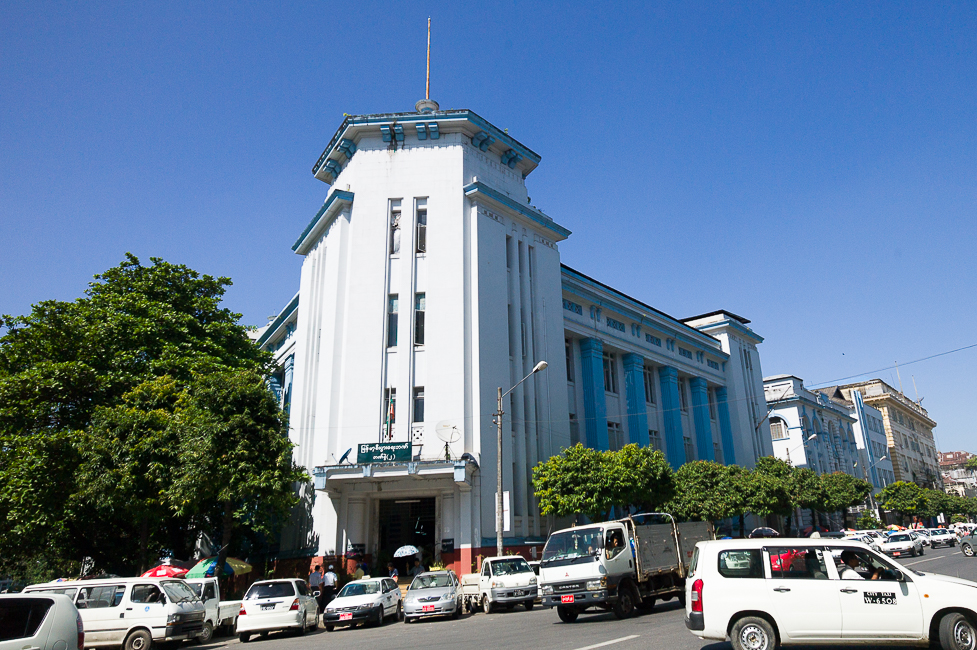
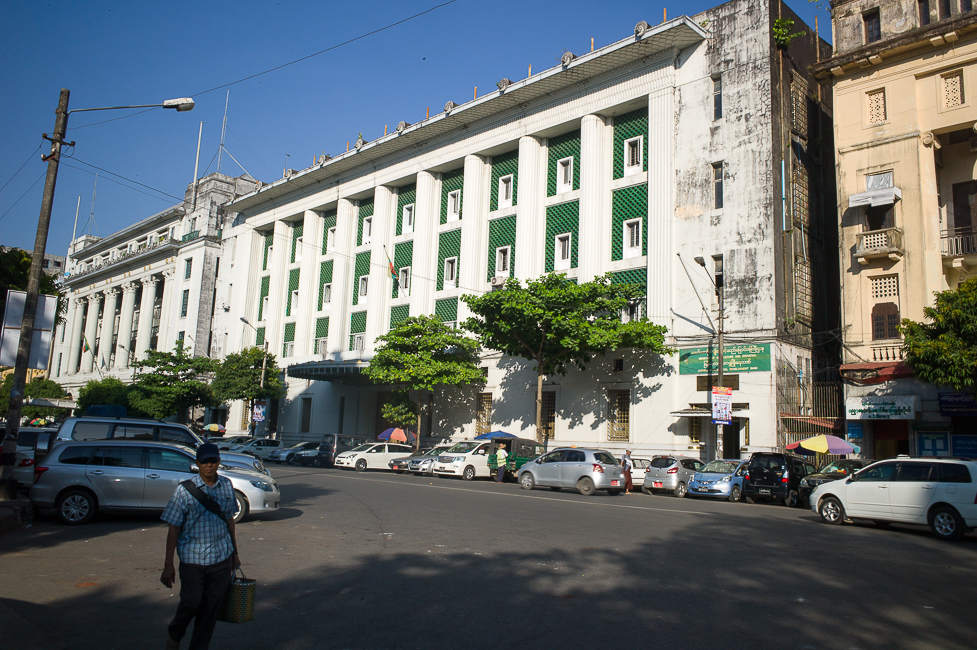
Others are still waiting for investors.
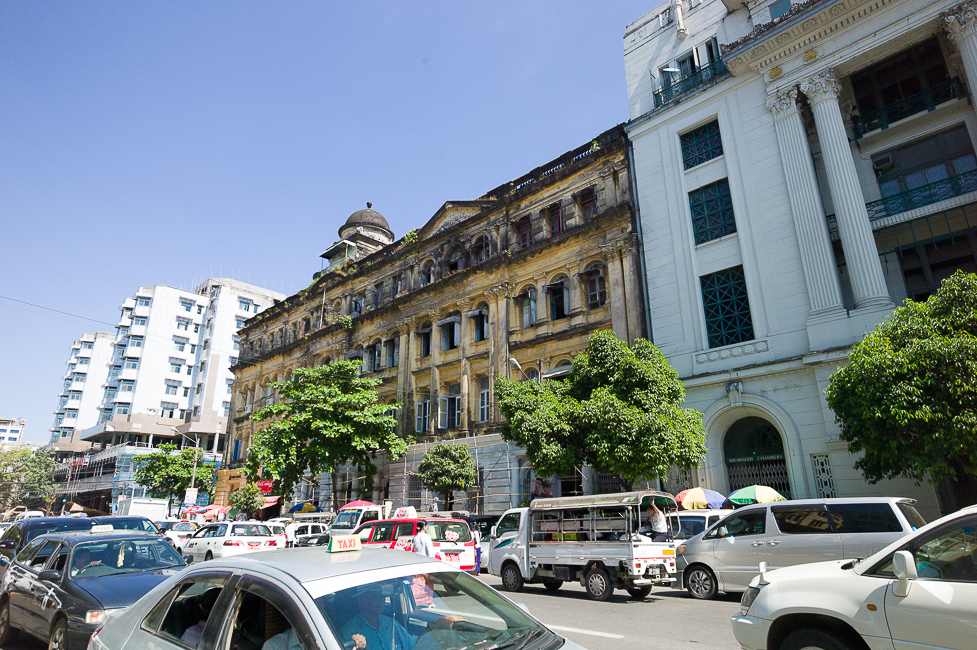
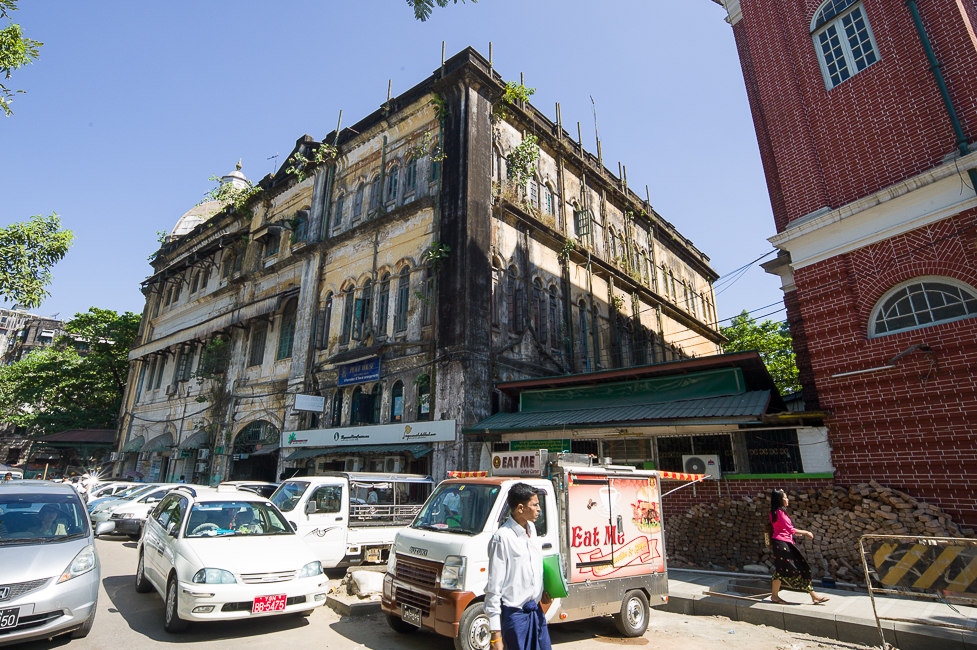
Coming back closer to the Sule Pagoda you pass the former Central Telegraph Office.
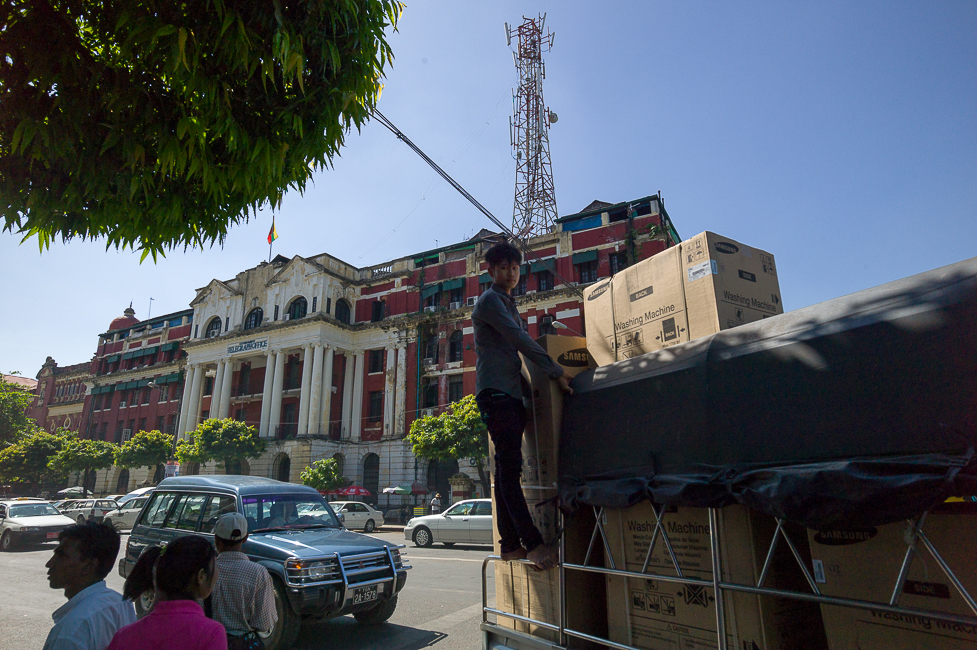
The New York Times had an article on the restoration efforts made to preserve the colonial heritag on December 13th. (http://www.nytimes.com/2014/12/14/world/racing-to-save-a-colonial-past-in-decay.html) There is indeed a lot to do. The huge complex of the Ministers Offices (“Sekretariat”) from which the British controlled Burma are deserted and basically ruins. A huge double fence is the only way to protect the building from decay in the meantime. 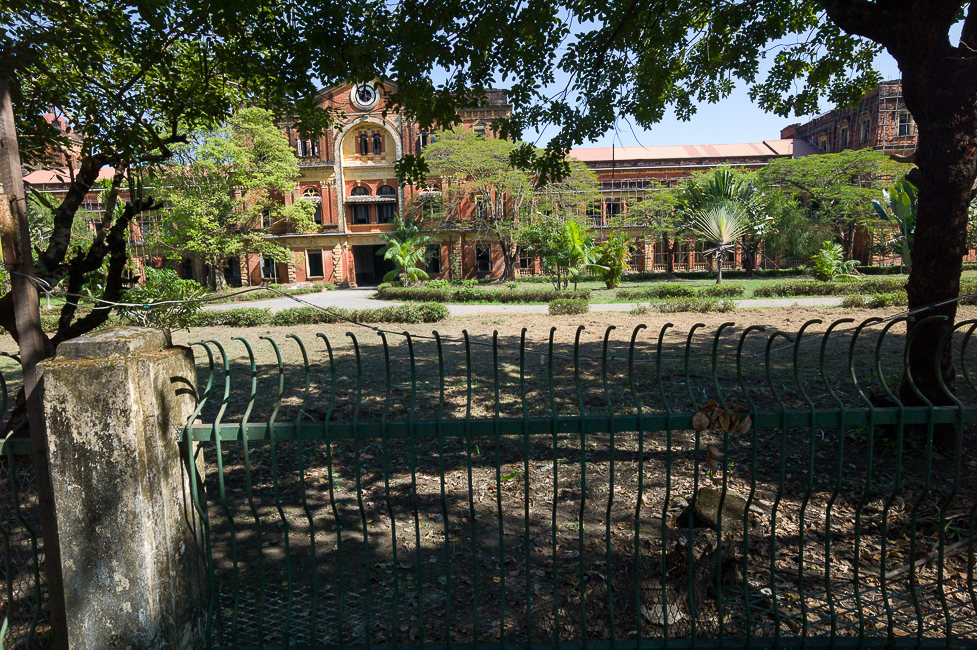
As the article lines out the challenges are tremendous.And it will be hard to preserve whole segments of colonial architecture as buildings have been already been replaced by modern ones. This has especially effected Merchant Street, which runs parallel to Strand Street and was once the commercial centre of Yangon.


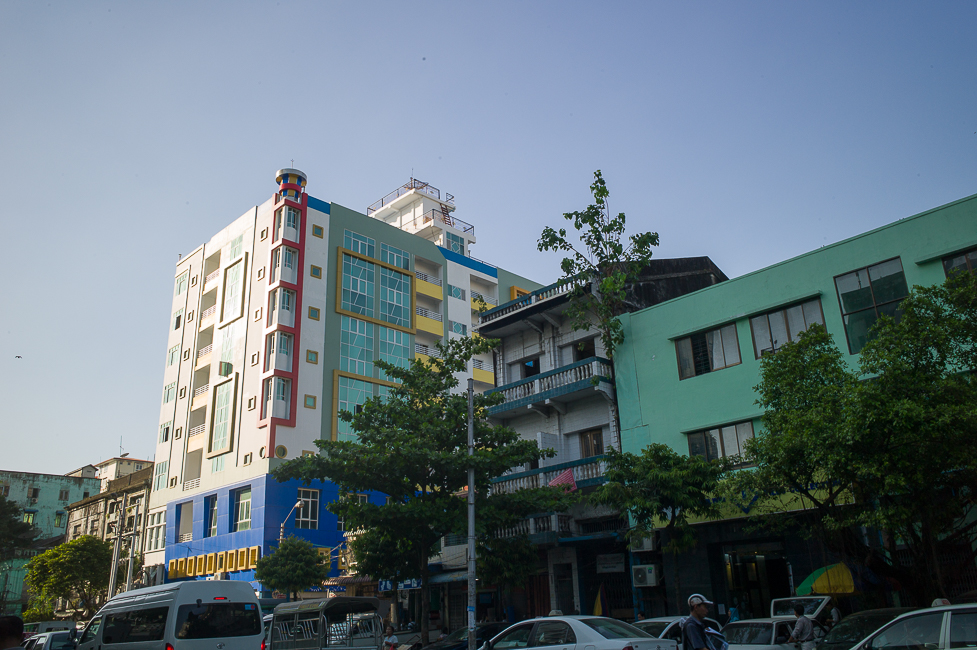
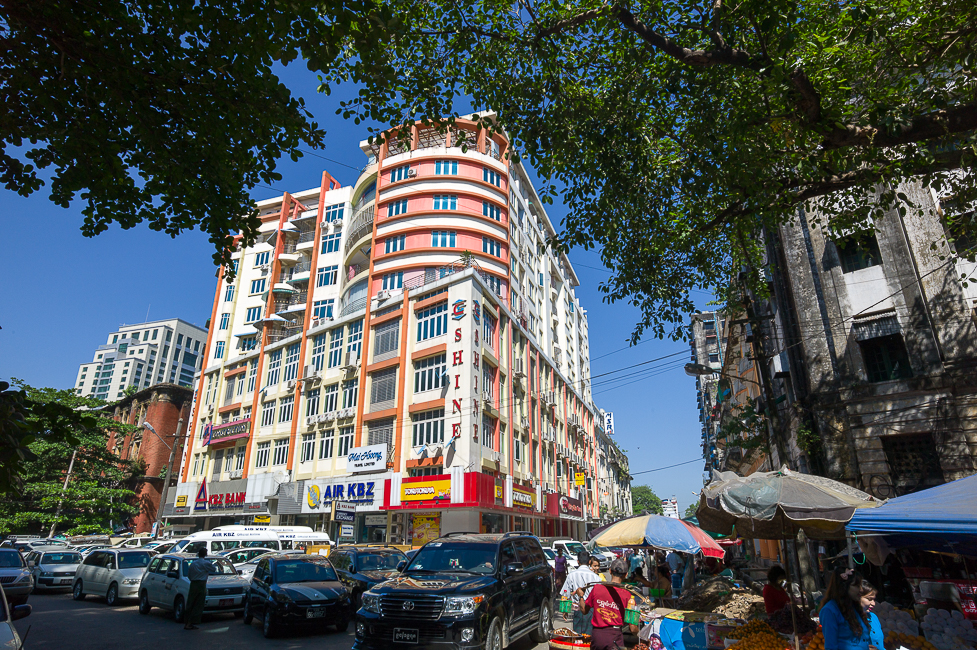
The director of the Yangon Heritage Trust was quoted saying “Yangon has one of the best preserved colonial cityscapes in the world “. Let´s put it that way: There is lot of potential to turn downtown Yangon into a showcase of architectural heritage. But the challenges are enormous, given the size of the area and number of buildings.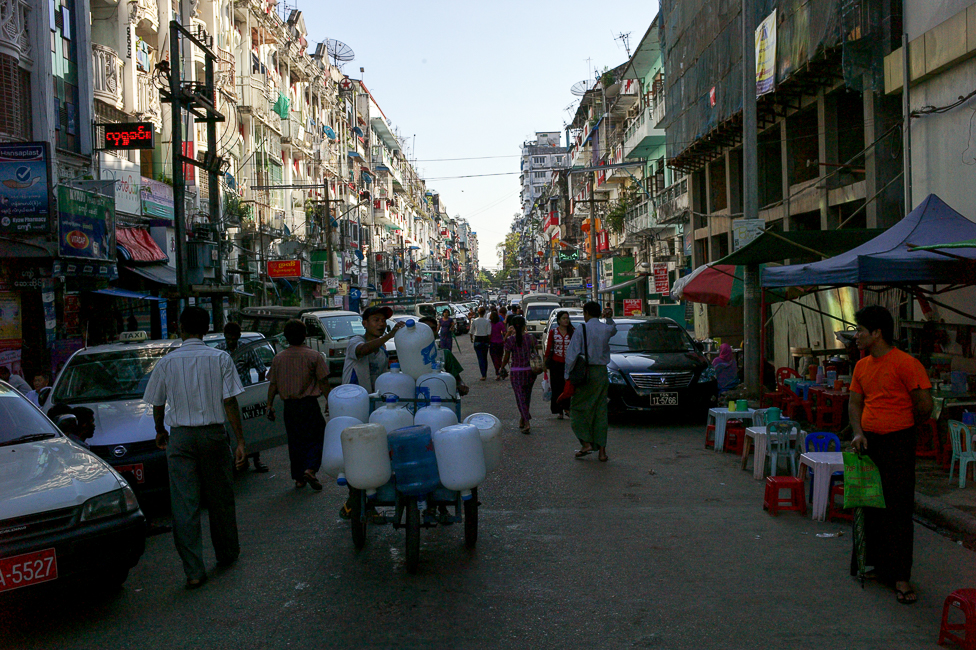
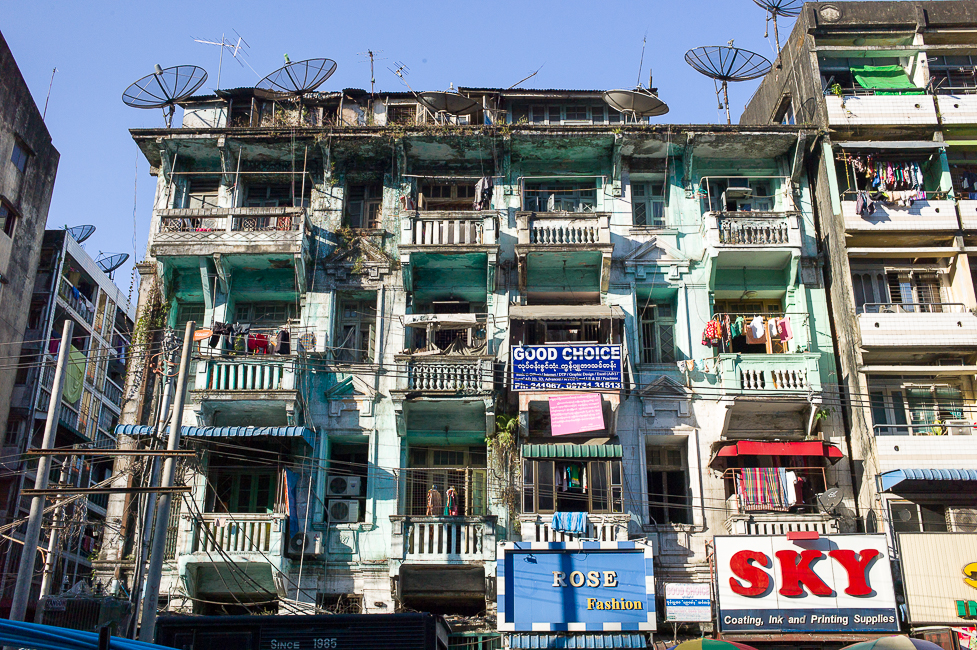
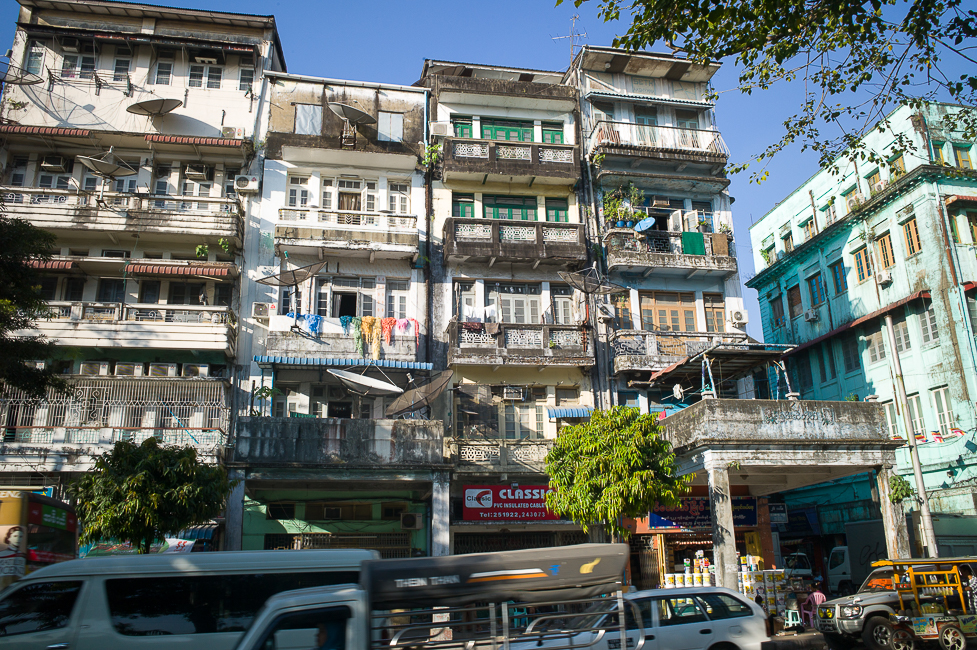
In the meantime let´s wait and see.
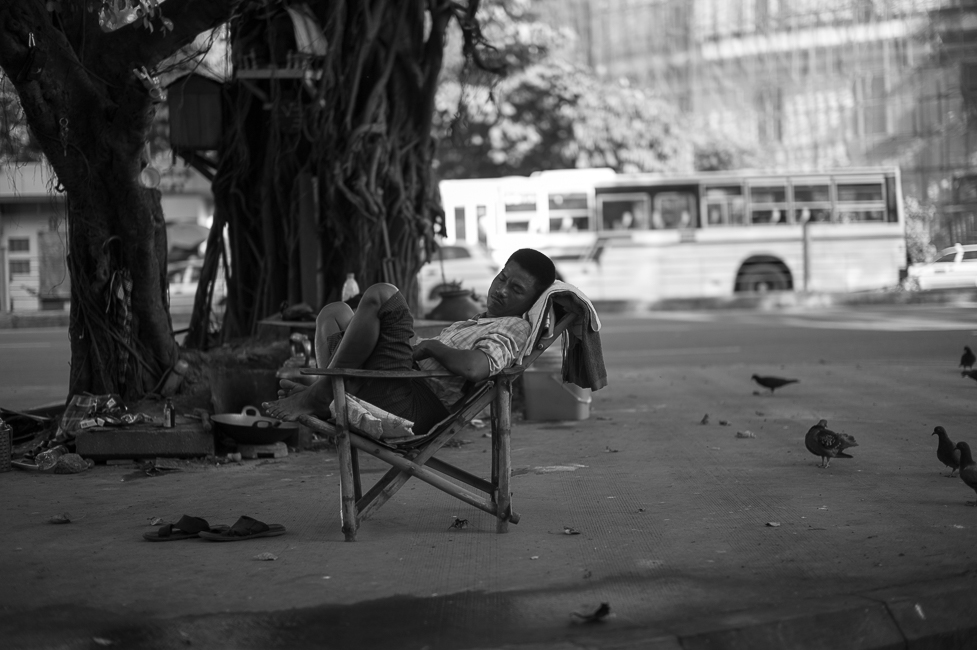
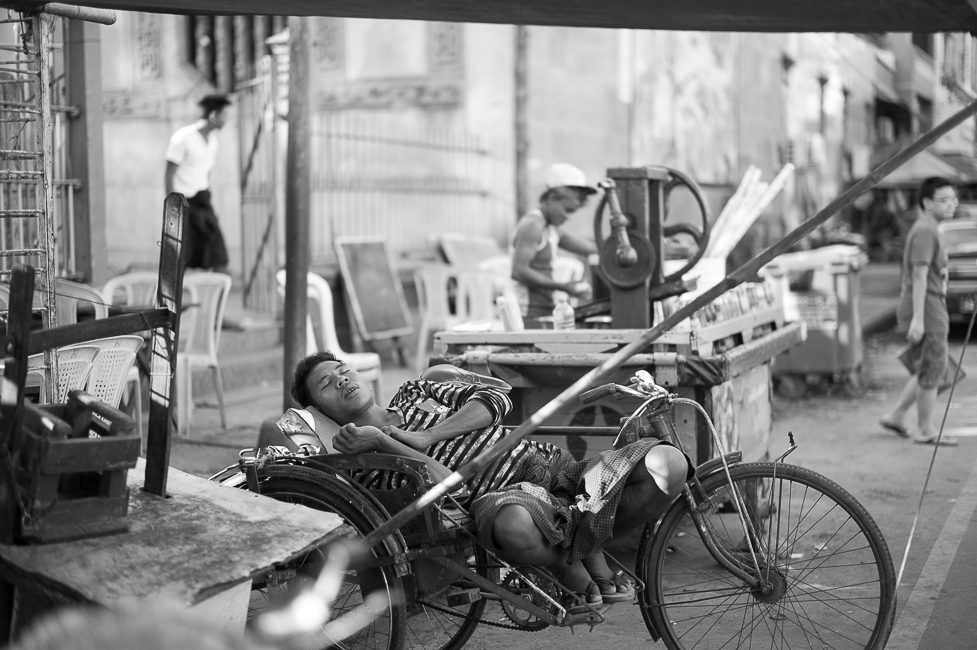
Leave a Reply